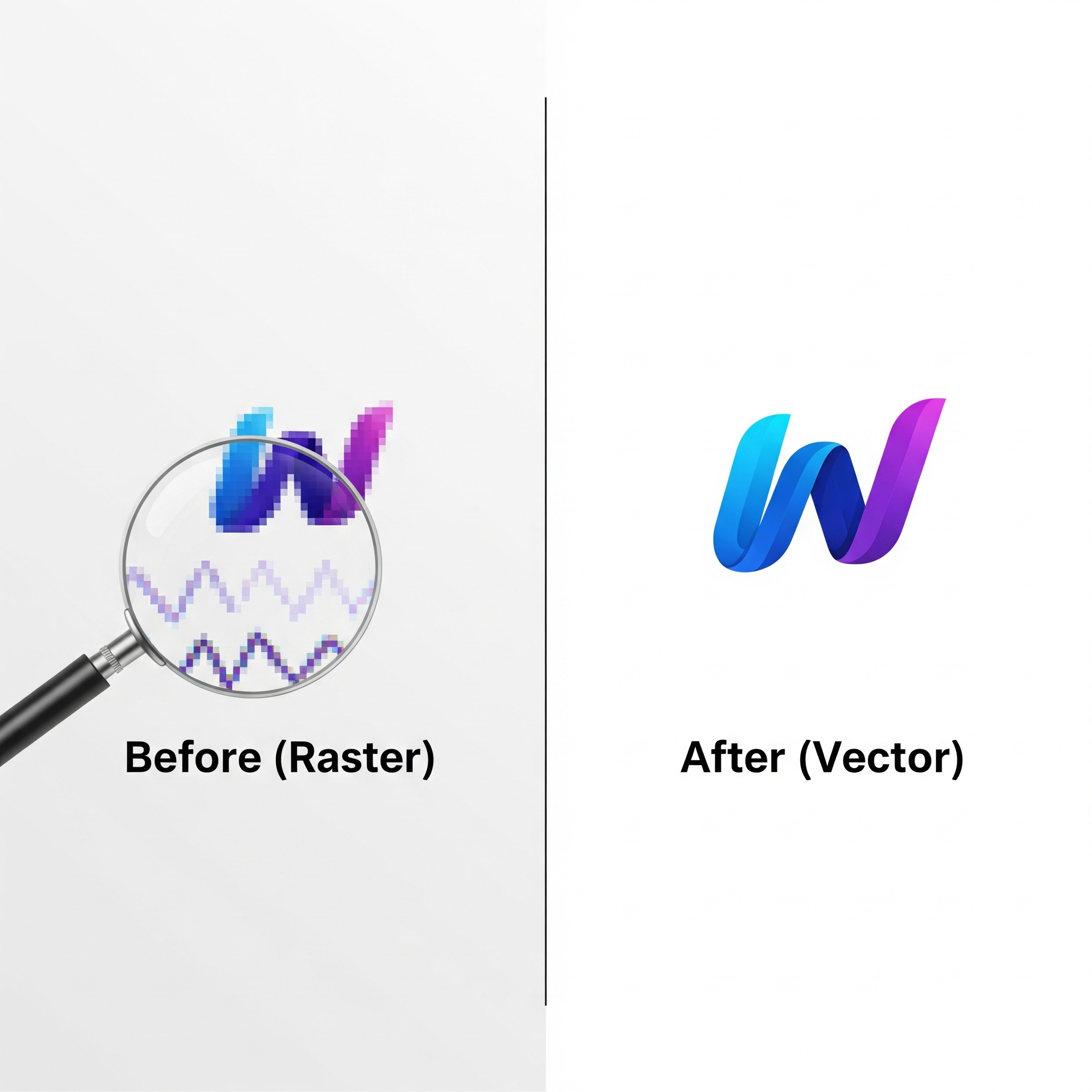
Logo vectorization services are the unsung heroes of branding. Let’s get real for a second. How many times have you seen a business card with a logo that looks fuzzy? Or a billboard where the brand mark just doesn’t hit the way it should? We’ve all been there. And the culprit, more often than not, is the same: a raster logo that wasn’t designed to scale.
That’s why vectorizing your logo isn’t just a “nice-to-have”, it’s a branding essential. Whether you’re printing your logo on a business card, a T-shirt, or the side of a truck, you want it to look clean, crisp, and professional at every size. And that’s exactly where Graphic Tracer, available from Graphical Systems, steps in.
Let’s break it all down, no jargon, no tech-speak, just why this matters, and how it can save your brand from looking like a pixelated mess.
Before we jump into why vectorizing your logo is essential, let’s clear up the basics:
In short:
If your logo lives in raster format only, you’re walking a tightrope—one wrong move (like resizing for a banner) and your visual identity suffers.
Let’s get into the meat of it. Here’s why converting your logo from raster to vector is one of the smartest branding moves you can make:
Whether your logo is on a pen or a billboard, vectors keep it sharp. No fuzzy lines. No weird pixelation. Just pure, clean detail.
You’ll need your logo in different formats depending on the platform:
Having a vectorized logo means you’re ready for anything.
Want to update a color or tweak a shape in your logo? Vectors make that simple. No need to start from scratch—just edit the elements you need.
A pixelated logo screams “amateur hour.” A vectorized logo? Sleek. Professional. Trustworthy. That stuff matters when people are judging your brand in seconds.
With a vector file, your logo looks the same everywhere—print, web, video. Consistency builds trust, and trust builds brands.
Here’s the thing: not all logo vectorization software is created equal.
You can run your raster logo through some free logo vectorizer online—sure. But you’ll likely end up with rough edges, missing fonts, or weird distortions. That’s where Graphical Systems USA comes in with a game-changing solution.
Let me paint you a quick picture. A client sends over their logo from 2010—a 200×200 PNG that looks like it went through a blender. They need it for a vinyl banner at a trade show in a few days. Classic panic mode.
I pop it into Graphic Tracer, separate the colors, auto-trace it using the artwork logo auto-tracing tool, and let Font-Eye clean up the distorted type. Within minutes, I’ve got a crisp, professional vector that’s ready for the printer. Client’s happy. I’m the hero.
That’s the kind of magic a good logo design editor can make happen.
Sure, logos are the big use case—but that’s not where the story ends. Once you get into the vector world, it opens up all kinds of doors:
If it needs to look sharp and professional, a vector is the way to go.
Your customer’s logo is the first impression. It’s their visual handshake. And if that handshake is fuzzy or inconsistent, people notice—even if they don’t know exactly why.
By converting your logo from raster to vector, you’re not just fixing a file—you’re investing in the brand’s future. And with a tool like Graphic Tracer available from Graphical Systems USA, you’re setting yourself up for scalable success across every platform.
So if you’ve been putting it off—or haven’t thought about it at all—now’s the time. Trust me: you’ll never go back to pixels once you’ve gone vector.
For 50 years, WWF has been protecting the future of nature. The world’s leading conservation organization, WWF works in 100 countries and is supported by 1.2 million members in the United States and close to 5 million globally.